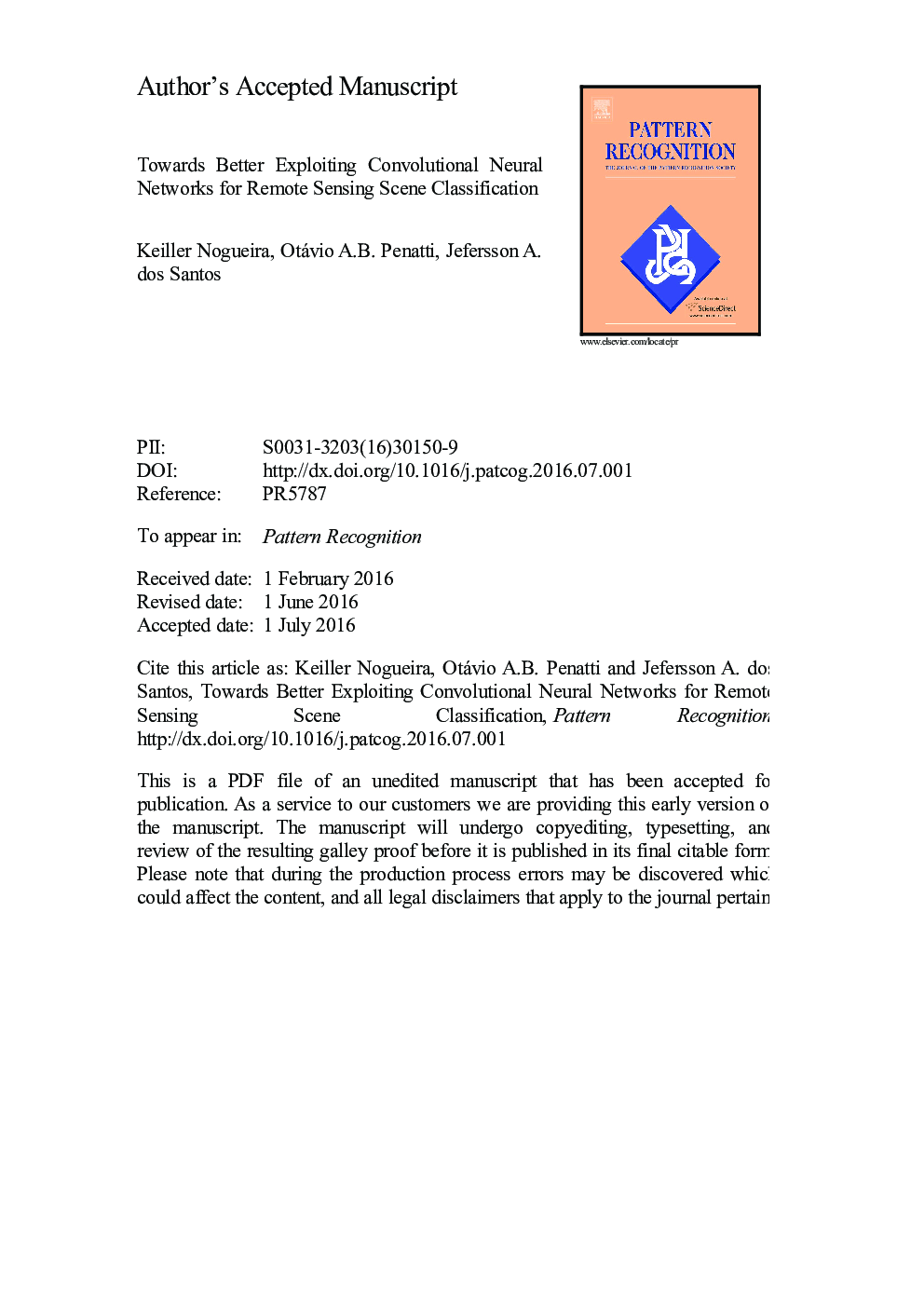| Article ID | Journal | Published Year | Pages | File Type |
|---|---|---|---|---|
| 6939806 | Pattern Recognition | 2017 | 33 Pages |
Abstract
We present an analysis of three possible strategies for exploiting the power of existing convolutional neural networks (ConvNets or CNNs) in different scenarios from the ones they were trained: full training, fine tuning, and using ConvNets as feature extractors. In many applications, especially including remote sensing, it is not feasible to fully design and train a new ConvNet, as this usually requires a considerable amount of labeled data and demands high computational costs. Therefore, it is important to understand how to better use existing ConvNets. We perform experiments with six popular ConvNets using three remote sensing datasets. We also compare ConvNets in each strategy with existing descriptors and with state-of-the-art baselines. Results point that fine tuning tends to be the best performing strategy. In fact, using the features from the fine-tuned ConvNet with linear SVM obtains the best results. We also achieved state-of-the-art results for the three datasets used.
Keywords
Related Topics
Physical Sciences and Engineering
Computer Science
Computer Vision and Pattern Recognition
Authors
Keiller Nogueira, Otávio A.B. Penatti, Jefersson A. dos Santos,
